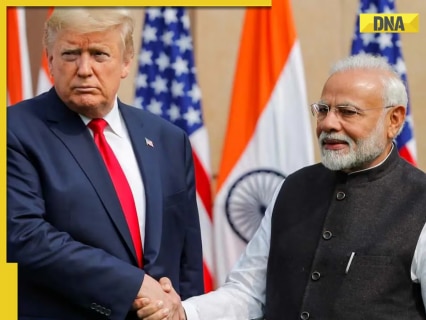Health
Trump Implements Additional 25% Tariff on Indian Imports

On March 6, 2024, United States President Donald Trump announced a significant increase in tariffs on imports from India, introducing an additional 25 percent levy. This new measure escalates the total tariff on Indian goods to 50 percent, a move that could have substantial implications for trade relations between the two nations.
The announcement was made during a press conference in Washington, where Trump emphasized the need to protect American industries and jobs. He stated that the tariffs are a response to what he describes as unfair trade practices by India, which he claims have hurt U.S. manufacturers and farmers. The President’s decision has been met with mixed reactions, highlighting the ongoing tension in U.S.-India trade relations.
The implementation of this increased tariff is part of a broader strategy by the Trump administration to renegotiate trade agreements with various countries. The President’s focus on tariffs is intended to address the trade deficit the United States has with India, which stood at approximately $22.9 billion in 2023. Trump’s administration believes that imposing higher tariffs will encourage domestic production and reduce reliance on foreign imports.
India has responded to these developments with concern. The Indian government has indicated that it may seek to retaliate against American goods, potentially leading to a trade war between the two nations. Indian officials have described the tariffs as “unfair” and detrimental to both economies. They argue that such measures could adversely affect not only Indian exporters but also American consumers, who may face higher prices for goods imported from India.
Trade analysts are closely monitoring the situation. Many believe that the increased tariffs could lead to decreased trade volumes and economic strain for both countries. The relationship between the U.S. and India has been characterized by collaboration in various sectors, including technology and defense. However, these new tariffs could jeopardize those partnerships.
As this situation develops, stakeholders in both nations are urged to engage in dialogue to address the underlying issues that have led to this escalation. Diplomatic efforts will be crucial in mitigating the potential fallout from these trade measures, which could have broader implications for international trade dynamics in the coming months.
The impact of the tariffs will likely be felt across multiple industries, including textiles, pharmaceuticals, and agricultural products, where India is a significant exporter. As businesses adapt to these changes, the long-term effects on both economies remain uncertain. The coming weeks will be critical in determining the trajectory of U.S.-India trade relations and the global economic landscape.
-

 World5 months ago
World5 months agoSBI Announces QIP Floor Price at ₹811.05 Per Share
-

 Lifestyle5 months ago
Lifestyle5 months agoCept Unveils ₹3.1 Crore Urban Mobility Plan for Sustainable Growth
-

 Science4 months ago
Science4 months agoNew Blood Group Discovered in South Indian Woman at Rotary Centre
-

 World5 months ago
World5 months agoTorrential Rains Cause Flash Flooding in New York and New Jersey
-

 Top Stories5 months ago
Top Stories5 months agoKonkani Cultural Organisation to Host Pearl Jubilee in Abu Dhabi
-

 Sports4 months ago
Sports4 months agoBroad Advocates for Bowling Change Ahead of Final Test Against India
-

 Science5 months ago
Science5 months agoNothing Headphone 1 Review: A Bold Contender in Audio Design
-

 Top Stories5 months ago
Top Stories5 months agoAir India Crash Investigation Highlights Boeing Fuel Switch Concerns
-

 Business5 months ago
Business5 months agoIndian Stock Market Rebounds: Sensex and Nifty Rise After Four-Day Decline
-

 Sports4 months ago
Sports4 months agoCristian Totti Retires at 19: Pressure of Fame Takes Toll
-

 Politics5 months ago
Politics5 months agoAbandoned Doberman Finds New Home After Journey to Prague
-

 Top Stories5 months ago
Top Stories5 months agoPatna Bank Manager Abhishek Varun Found Dead in Well









